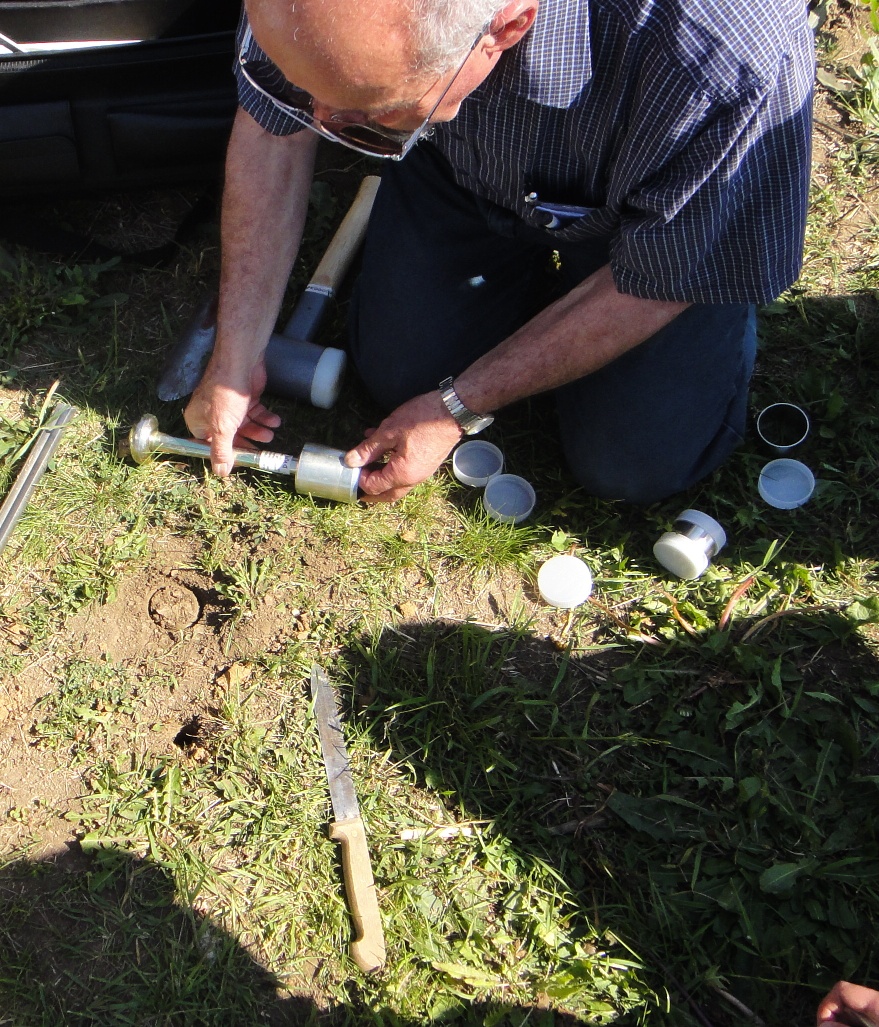

- Soil sampling based on disturbed and undisturbed sampling trial#
- Soil sampling based on disturbed and undisturbed sampling windows#
Soil sampling based on disturbed and undisturbed sampling windows#
Steel tubes with cut-out windows are driven into the soil with a mechanical hammer and extracted manually or hydraulically giving access to samples from 10m, depending on the soil conditions. COMPONENTS OF A BUILDING: Sub-structure and Super. Building Components: Masonry units: walls, columns. Building Components: Vertical Transportation Struc. LIVE LOADS IN A BUILDING: on floors, on roofs. Foundations of Buildings and Structures: Introduct. Essential Requirements of a Good Foundation. TYPES OF FOUNDATIONS: Shallow foundation, Deep Fou. SHALLOW FOUNDATION - Spread Footings: Single footi. SHALLOW FOUNDATION - Combined Footings: Rectagular. SHALLOW FOUNDATION - Mat Foundation (Raft Foundati. DEEP FOUNDATIONS: Pier Foundation (drilled caisson. DEEP FOUNDATIONS: Well Foundations (or caissons). SITE INVESTIGATION AND SUBSOIL EXPLORATION: Design. Soil sampling based on disturbed and undisturbed sampling trial#
OPEN EXCAVATION (OPEN TRIAL PITS) - SITE EXPLORATION. SUB-SURFACE SOUNDINGS - SITE EXPLORATION. CHOICE OF EXPLORATION METHOD - FOUNDATIONS. SOIL SAMPLES AND SAMPLERS - FOUNDATIONS SITE EXPLO. BEARING CAPACITY OF SOILS - SITE EXPLORATION. ANALYTICAL METHODS - FOUNDATIONS SITE EXPLORATION. PLATE LOAD TEST - FOUNDATION SITE EXPLORATION. PLATE LOAD: Test procedure - FOUNDATION SITE EXPLO. PLATE LOAD: Safe bearing pressure on permissible s. Limitations of plate load test - FOUNDATION SITE E. Standard Penetration Test - SITE EXPLORATION. DESIGN OF FOUNDATIONS - PRESUMPTIVE BEARING CAPACI. METHODS OF IMPROVING SAFE BEARING PRESSURE OF SOILS. CAUSES OF FAILURES OF FOUNDATIONS AND REMEDIAL MEA. EXCAVATION AND TIMBERING OF FOUNDATION. EXCAVATIONS IN GROUND WITH SUB-SOIL WATER. It is used for firm to hard cohesive soils and cemented soils. Rotatory samplers are the core barrel type having an outer tube provided with cutting teeth and a removable thin wall liner inside. The sampler is more suitable for sampling soft soils saturated sands. The sampler is then Iifted up, with piston rod clamped in position. When the desired sampling elevation is reached, ihe piston rod is clamped, thereby keeping the piston stationary, and the sampler tube is advanced down into the soil. During lowering of the sampler through the hole, the lower end of the sampler is kept closed with the piston. The stationary piston sampler consists of a Sample cylinder and the piston system. The tube may be seamless or it may be split in two parts in the latter case it is known as split spoon sampler. The check valve helps to retain sample when the sampler is lifted up. The sampler head is provided with vents (valve) to permit water and air to escape during driving. The open drive sampler is a tube open at its lower end. Depending upon the mode of operation, samplers may be classified in the following three common types : (i) open drive sampler (including split spoon samplers), (ii) stationary piston sampler and (iii) rotary sampler. Thick wall samplers are those having the area ratio greater than 10 percent. The samplers are classified as thick wall or thin wall samplers depending upon the area ratio. The non-retum valve, invariably provided in samplers, should permit easy and quick escape of water and air when driving the sampler. Lower value of inside clearance allows the elastic expansion of soil and reduces the frictional drag. The walls of the sampler should be smooth and should be kept properly oiled so that wall friction is minimum. The inside clearance should lie between 1 to 3 percent and the outside clearance should not be much greater than the inside clearance. It should not be greater than 25 percent for soft sensitive soil, it should preferably not exceed to porcent. The area ratio should be as low as possibie. The following terms are defined with respect to the diameters marked in Fig. 
2.18 shows a typical cutting edge of a sampler, with the lower end of the sampler, with the lower end of the sampler tube. The design features of the sampler, that govern the degree of disturbance are (i) cutting edge (ii) inside wall friction and (iii) non-return valve.įig. The sampling tube when forced into the ground should cause as little remoulding and disturbance as possible. To take undisturbed samples from bore holes properly designed sampling tools are required. The sample disturbance depends upon the design of the samplers and the method of sampling. An undisturbed sample is that in which the natural structure and properties remain preserved. Such a soil sample should, however, be representative of the natural soil by maintainlng the original proportion of the various particles intact. A disturbed sample is that in which the natural structure of soil gets partly or fully modified and destroyed although with suitable precautions the natural water content may be preserved.






 0 kommentar(er)
0 kommentar(er)
